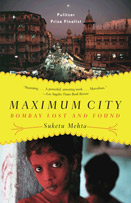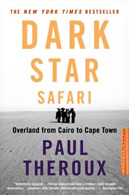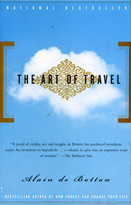Peter, one of our travel-mates, was sitting in our room late at night. He was relating a story to Jacqueline about a legless man with shoes on his hands, pulling himself through the street. I was fumbling with the laptop, half-asleep and only half listening; I absent-mindedly asked "Was he naked??" Waves of confused laughter from the two of them. I’m not sure exactly why I assumed the guy was naked, but it seemed plausible to me. We then talked about how India sharpens one’s sense of the sick and absurd. It got to be a common question people in our group asked each other: "What’s the most disturbing thing you saw today?"
From these conversations comes this unofficial, still-being-compiled list of some of the more unsettling things we’ve seen in India. They’re not in any particular order, and perhaps I’ll be adding to the list as I remember more.
- - - - - -
On the express train from Delhi to Agra, a cross-eyed & legless boy dragged himself down the aisle, tugging on peoples’ sleeves, asking for spare change and collecting the garbage/recyclables from our back seat pockets.
- - - - - -
In Delhi, as we sat on a tuk-tuk momentarily idling at a busy roundabout, a man hobbled up to us, dodging traffic, wincing in pain, naked except for a turban and loincloth. His loincloth, however, was pushed completely aside by the giant brown beach ball he tenderly balanced between his legs as he shuffled--he had
scrotal elephantiasis(!!), something I had always thought was mere urban legend. The beach ball dangled down about mid-calf, and seemed in danger of hitting neighboring vehicles. "Money for medicine! Money for medicine!" he pleaded to us in a gravelly Tom Waits voice. We knew we were witness to something unique when even our tuk-tuk driver recoiled from the sight--he seemed genuinely spooked, and tore us out of our gridlock as soon as he saw the slightest opening in the traffic.
- - - - - -
In Bombay, stopped at an intersection, a handless beggar put his forearm stump through our cab window and asked for some rupees. Another day, at another intersection, a young man completely covered in blistered burned scar flesh (face, chest, and arms; he barely looked human)--leaned into our cab and asked for money (yes, I suppose I should know by now to keep my window rolled up, but it gets so hot). It had been mentioned to us several times that families sometimes deform their children on purpose—set them on fire, cut out their tongues, etc—to increase their "earning power" as beggars.
- - - - - -
Beyond that, there are the more common deformities we noticed: missing arms or legs, people with strangely “reversed” knee joints who walk around on all fours like dogs or horses. There are countless people with disabilities that seem treatable: basic limps, cleft palettes, cataracts... Evelyn (a longtime resident of Mozambique) shook her head: "It’s amazing. It’s like home; people die from completely stupid things like toothaches."
- - - - - -
In the muddy, open-sewered streets of Jaisalmer, feral pigs engaged in violent turf-wars with feral dogs. When walking, we tried to give them a wide berth. Some of our travel-mates saw a puppy shaken to death in the jaws of a big mamma-pig; this was what had set off the last round of animal violence & retribution near our hotel.
- - - - - -
Also in Jaisalmer, whenever walking back and forth between our hotel and the internet café next door, a rabid dog with hip dysplasia excitedly stumbled/wobbled after us with his mouth full of foamy saliva. We would throw rocks at him to keep him at bay.











